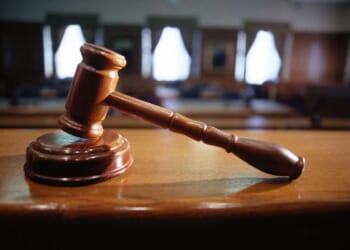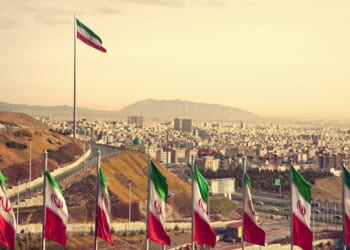The beginning of the recovery of Catholic influence in Great Britain can be dated to the conversion in 1845 of John Henry Newman, then at the peak of his influence in the Oxford Movement. For various political, cultural, and theological reasons, since the English Reformation Roman Catholicism had been regarded as intellectually backward and politically disloyal. The conversion of someone as prominent as Newman called that thinking into question. There was a slow trickle of Catholic converts over the following years, mostly of Anglican clergy, of whom the best known were Henry Edward Manning and the poet Gerard Manley Hopkins. Lay converts were not as prominent because such action still put oneself beyond the pale politically and socially in Victorian society. That changed dramatically in 1874.
In that year, without warning, George Frederick Robinson, Marquess of Ripon, the son of a prime minister, a member of every Liberal ministry since 1861 and one of the bulwarks of the British establishment, announced he was joining the Roman Catholic Church. The decision was shocking and made all the more pointed by taking place on September 8, the feast of the Nativity of the Blessed Virgin. Ripon was not only a Liberal but also associated with the school of broad church Anglicanism. Adding to the surprise was the fact that he was serving as grand master of the Freemasons at the time he embraced Rome.
The British establishment was shocked. Even his wife hadn’t a clue. Former prime minister William Gladstone, a fellow Liberal and faithful member of the Church of England, even asked her, “How is it possible such news can be true?” Lord Granville, one of the most prominent figures in the Liberal Party and a close friend, told Queen Victoria that while Ripon had been drifting further toward High Anglicanism for some time, he never suspected the conversion to Rome. Prime Minister Benjamin Disraeli promised the queen that he would find out the grisly details for her.
The cause of Ripon’s conversion was, in fact, simple. He had aways been deeply religious, keeping and reading a large library of religious works. Yet he hadn’t told anybody he was going through a religious crisis of conscience, which his first biographer argues was intensified when his brother-in-law and close friend was murdered by bandits while touring Greece.
Ripon’s conversion set off one of those outbursts of anti-Catholicism that flared up periodically in England. An editorial in The Times called his sanity into question and hoped it wouldn’t serve to lure others into the arms of the Roman faith. Later, when Lord Ripon visited Pope Pius IX at the Vatican (interestingly, along with his loyal Anglican wife, Harriet), The Times sneered that he had given the pope a check for 10,000 pounds. While Ripon became a frequent contributor to Catholic causes, particularly Catholic educational establishments, that charge was false.
Among the many criticisms of his action, the one that hurt Ripon deeply came from the leader of the Liberal Party and his close friend, Gladstone. It was Gladstone who had raised Ripon’s position in politics by appointing him as the British representative dealing with the Alabama Claims, the controversy that arose when the British allowed armed ships to be built for the Confederacy during America’s Civil War. Ripon was rewarded to promotion to marquis in return for resolving this issue peacefully and to the satisfaction of both nations. Thus, he was deeply wounded when Gladstone wrote a pamphlet entitled, “The Vatican Decrees in Their Bearing on Civil Allegiance,” which argued that one could not accept Roman Catholicism without surrendering his mental and moral freedom. The pamphlet sold 150,000 copies, an enormous figure for the time, and if that weren’t enough, Gladstone published at the same time a shorter version of the same argument in an article in the popular journal Contemporary Review, “Ritualism and Ritual.”
Gladstone claimed his commentary wasn’t directed specifically at Ripon, but the timing and the context clearly showed it was. We know that Gladstone had been thinking about the issue since the proclamation, and from Gladstone’s private papers it is clear that Ripon’s action led him to publicize his view.
Gladstone’s action hurt Ripon personally, and so he responded, challenging the charges, citing his loyalty to the Crown and his long service to the state, as well as personal friendships with leading Liberal and Conservative political figures. Gladstone reluctantly and in his typically tortured language withdrew the charge, noting that some (everyone understood he meant Ripon) who have joined “the Latin Church” since the Vatican Council “would adhere … to their civil loyalty and duty.”
Nevertheless, Ripon believed that his public career was over and maintained a low profile for the next few years in the House of Lords, where he had been something of a Liberal spokesman in the past. He spent most of his time after his conversion working behind the scenes to promote the interests of Catholic education, a topic on which he was something of an authority. He had been one of figures behind the landmark Elementary Education Act of 1870, which established universal primary education for the first time in England and Wales. Over the next few years, he served as chairman of the Catholic Poor School Committee and used his knowledge of the Education Act and his influence to see that Catholic schools received their share of government funds. In 1879 alone, with Ripon’s active support, Catholic schools received government grants worth 130,000 pounds, an enormous sum for the times.
While active in Catholic interests, Ripon largely absented himself from Parliament during the session following his conversion and spoke only three times the following year. He began to return to political activity in the 1878 and 1879 sessions. Two matters ended his silence: the drift of Disraeli’s politics, and especially the outbreak of wars in Afghanistan in 1878 and South Africa, the Zulu war, the next year. Ripon intervened 26 times during the 1879 parliamentary session. Both conflicts convinced him that England was wrong politically and morally. Most importantly, he had come to the conviction that he should no longer remain silent and that Roman Catholics had a right to speak their consciences on political matters.
Ripon also demonstrated that a Catholics didn’t have to follow the Church’s position on every conceivable issue. When war broke out between the Ottoman Empire and Czarist Russia over the Bulgarian massacres, the Vatican view, accepted by the Catholic press and hierarchy in England, was that Turkey, with all its flaws, better protected Catholic interests than Russia, which was persecuting Catholic Poland. Ripon followed the Liberal line articulated most strongly by Gladstone in his pamphlet “The Bulgarian Horrors,” which argued that the Turks should be driven out of Bulgaria “bag and baggage,” and criticized Disraeli’s government for its weakness in the face of evil. Ripon’s action was the first sign that he desired a return to the Liberal leadership. We are able to follow his return to political activity and the reasons behind his actions because, late in 1878, he began to keep a daily diary. It reveals that he was encouraged by his wife and political friends like Lord Granville and Reginald Brett, private secretary to Lord Hartington and titular leader of the Liberal opposition, to speak out on political matters. His Catholic contacts, both lay and clerical, also agreed with his stance.
Over the next two years, Ripon emerged as one of the Liberal Party spokesmen on two broad areas: imperial matters, especially those relating to Afghanistan, where the British had suffered a humiliating defeat in 1878, and any issues involving Catholic interests. When Disraeli, now Lord Beaconsfield, called a general election for 1880, Ripon, as a peer, was banned from campaigning in general elections, but behind the scene he labored to promote the Liberal cause and especially to promote Catholic interests.
It appeared during the campaign that there was a swing of Catholic voters to the Conservatives, a result of many factors, including Henry (now Cardinal) Manning’s supposed sympathy for the Tory cause and the influence of the Catholic Duke of Norfolk, the premier Peer of the Realm, on the Conservative side. Ripon did his best to use his contacts in Catholic circles to counteract this movement, including giving large funds to the Liberal cause.
The Liberals won in a landslide, and Ripon wrote in his diary that he was partly responsible for at least three Liberal candidate victories. More importantly, he argued that he had restored his position within the Liberal leadership and let it be known that he was interested in office again. Lord Granville and Lord Hartington supported a role for him in a future Liberal ministry. Much to his surprise, Gladstone, returning as prime minister, did also.
Shortly after the Liberal government was formed, Gladstone shocked the political world by offering Ripon the post of viceroy of India, one of the highest offices of state. Not everyone was pleased. The queen was doubtful, and The Times continued to believe in the exclusion of Roman Catholics from office under the Crown. Not all Conservatives were negative. The Saturday Review, a voice of intellectual conservatism, agreed that Ripon’s long and varied service in public affairs qualified him for high administrative office.
The last half of Lord Ripon’s career was a success. His Indian vice royalty was a moderate success, stuck as he was between the Indians, the Muslims, and the British colonial regime, and restored his reputation in the eyes of public opinion. He would serve in a major capacity in every Liberal administration until his death in 1909. In many ways, his political success opened a path for his fellow Roman Catholics, who would now be found in all future ministries, Conservative or Liberal or, later, Labour. The Arabist explorer and poet William Scawen Blunt produced a most succinct epitaph of Ripon’s career: “Good old Lord Ripon died today; the last of the honest old-fashioned Liberals.”




![Hegseth Demands Fitness Requirements, Says 'Fat Troops' 'Not Who We Are' [WATCH]](https://teamredvictory.com/wp-content/uploads/2025/09/Hegseth-Demands-Fitness-Requirements-Says-Fat-Troops-Not-Who-We-350x250.jpg)






